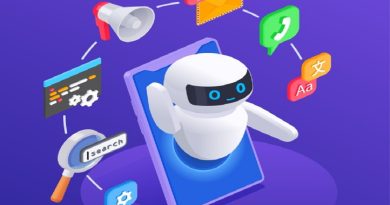Unleashing the Power of Google AI LAMDA: Revolutionizing Technology
In the ever-evolving landscape of technology, one name stands out as a pioneer and trailblazer: Google. With its relentless pursuit of innovation, Google has once again stunned the world with its groundbreaking development, Google AI LAMDA. In this article, we delve deep into the intricacies of Google AI LAMDA and explore how it has the potential to reshape our technological landscape.
Understanding Google AI LAMDA: A New Era of AI
Google AI LAMDA, an abbreviation for “Language Model for Dialogue Applications,” represents a quantum leap in the field of artificial intelligence. Built upon the foundation of the Transformer architecture, LAMDA has been meticulously designed to comprehend and generate human-like language patterns. This revolutionary model empowers machines to engage in meaningful and contextually relevant conversations, transcending the limitations of traditional chatbots.
Unveiling the Mastermind: Blake Lemoine
Behind this remarkable feat of technology stands a visionary architect, Blake Lemoine. His dedication and ingenious contributions to the development of Google AI LAMDA have propelled the boundaries of AI capabilities. Lemoine’s expertise underscores the significance of collaboration between brilliant minds in shaping the future of technology.
The Multifaceted Applications of Google AI LAMDA
The applications of Google AI LAMDA are as diverse as they are awe-inspiring. From enhancing customer service interactions to revolutionizing content creation, LAMDA’s potential is limitless. Its ability to decipher context and nuances within conversations makes it an invaluable asset for businesses seeking to elevate user experiences. Moreover, content creators can harness its capabilities to streamline the content generation process, leading to more dynamic and engaging materials.
How Google AI LAMDA Works: A Glimpse into the Mechanism
At the heart of Google AI LAMDA lies a complex network of neural connections. Through a process known as “unsupervised learning,” the model ingests vast amounts of text data, learning grammar, context, and even sentiment. This knowledge is then employed to generate coherent and contextually relevant responses, blurring the lines between human and machine communication.
The Future of Human-Machine Interaction
Google AI LAMDA’s advent signals a pivotal juncture in human-machine interaction. As the model continues to evolve and refine its abilities, the prospect of seamless, natural conversations between humans and machines becomes increasingly tangible. This transformative potential has far-reaching implications across industries, from healthcare to education, where personalized and efficient interactions can drive innovation and progress.
Embracing the Uncharted Territory
As society embarks on this new frontier of AI, it’s essential to approach the integration of Google AI LAMDA with ethical considerations and responsible practices. Striking a balance between automation and the preservation of human touch remains a challenge. However, with conscientious development and continuous refinement, the vision of harmonious coexistence between humans and AI can be realized.
A Mermaid Diagram of Google AI LAMDA’s Architecture
graph TD
A[Input Text] –> B{Google AI LAMDA}
B –> C[Context Understanding]
B –> D[Response Generation]
C –> E[Neural Networks]
D –> E
E –> F[Human-Like Responses]
Concluding Thoughts
In the annals of technological advancement, Google AI LAMDA’s emergence stands as a testament to human ingenuity and the relentless pursuit of excellence. Its potential to reshape how we interact with machines and redefine the boundaries of language comprehension is truly remarkable. As we navigate the uncharted waters of AI integration, embracing its capabilities while upholding ethical considerations will be key to unlocking a future where humans and machines thrive in harmony. The era of Google AI LAMDA has dawned, and its impact will undoubtedly resonate for generations to come.




